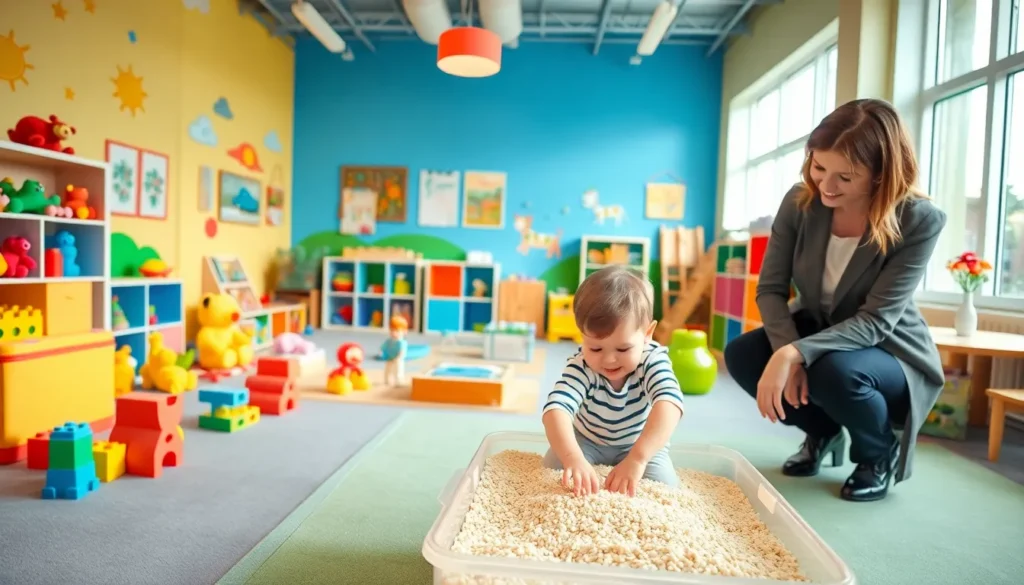When it comes to raising kids after a separation, parents often find themselves at a crossroads. Enter the big debate: co-parenting or parallel parenting? It’s like choosing between a game of chess and a game of checkers, each has its strategies and outcomes. If you’re navigating the waters of post-divorce parenting, understanding these concepts is crucial. So grab that cup of coffee (or maybe something stronger) because we’re diving deep.
Table of Contents
ToggleWhat Is Co-Parenting?

Co-parenting involves a collaborative approach where both parents actively participate in their child’s life, even after the relationship has ended. This arrangement focuses on maintaining a stable and nurturing environment, highlighting communication and shared responsibilities.
Benefits of Co-Parenting
One of the primary advantages of co-parenting is the direct involvement of both parents in their child’s upbringing. Children benefit from the emotional support and guidance of both parents, which fosters security and emotional health. Also, co-parenting tends to reduce feelings of resentment and hostility between parents, promoting healthier family dynamics. It can also be beneficial for the child, as they can experience balanced perspectives from both parents about decisions from school to extracurricular activities.
Challenges of Co-Parenting
But, it’s not all sunshine and rainbows. Co-parenting requires exceptional communication skills and often, both parents must be on the same page about their child’s matters. When conflicts arise, the stress can trickle down to the children, leading to confusion or divided loyalties. Sometimes, parental disagreements can affect co-parenting arrangements, causing miscommunication or friction, making it challenging to maintain that ideal collaborative approach.
What Is Parallel Parenting?
On the flip side, parallel parenting is a strategy where divorced parents work independently to raise their children, minimizing interaction with each other. This method usually comes into play when conflict between parents is high. Instead of collaborating, each parent sets their own rules and routines, creating an environment where they operate side by side, hence the term “parallel.”
Benefits of Parallel Parenting
Parallel parenting can significantly reduce conflict between parents, offering peace of mind. Each parent operates in their own sphere, which diminishes the chances of clashes and helps to keep the focus on the child’s needs. Children can also thrive in this setup by adjusting to two distinct parenting styles without the direct lines of conflict that could disrupt their stability.
Challenges of Parallel Parenting
But, parallel parenting can lead to confusion for children who may feel torn between different rules and expectations in each household. This might hinder their ability to develop a consistent routine, which is essential for their well-being. Also, when parents are disengaged from each other, crucial decisions about the child’s welfare may become complex and difficult to navigate.
Key Differences Between Co-Parenting and Parallel Parenting
Understanding the core differences between co-parenting and parallel parenting can guide parents toward the approach best suited for their families.
- Communication Style: In co-parenting, communication is essential. Parents work together, discussing decisions about schooling, healthcare, and daily routines. Conversely, in parallel parenting, communication is minimal or structured, aiming to reduce conflict and keep the focus on each parent’s individual approach.
- Involvement Level: Co-parenting promotes shared participation, while parallel parenting allows for more independence in parenting styles. In co-parenting, both parents contribute to decision-making, whereas parallel parenting sets boundaries that keep each parent’s involvement separate.
- Conflict Resolution: Co-parenting requires parents to resolve conflicts together, whereas parallel parenting minimizes interaction to avoid disputes altogether. This can lead to a more peaceful environment, but it may also complicate important decisions if parents cannot agree.
- Child’s Perspective: In co-parenting, children often see the unified front of their parents, which can enhance security. In parallel parenting, children might navigate different sets of rules, leading them to feel more stressed due to inconsistency.
Choosing the Right Approach for Your Family
Deciding between co-parenting and parallel parenting isn’t one-size-fits-all. Factors like the relationship history, communication skills, and the temperament of the child all play crucial roles in this decision. For parents who can maintain respectful dialogue, co-parenting may be ideal. It fosters unity and creates a stable framework for the child. But, if conflicts and tensions are significant, parallel parenting could provide the necessary space to ensure that children still have nurturing relationships with both parents without the stress of constant disagreements.
Before making a decision, families may consider counseling or co-parenting classes. These resources can help parents develop the skills needed to manage their new dynamics successfully.




